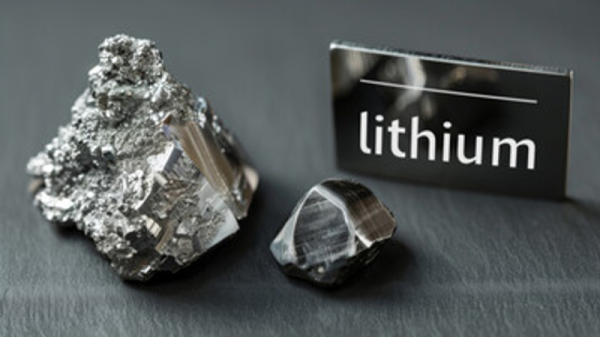How to Invest in Gold: An Investor’s Guide
Gold has been a symbol of wealth and a store of value for centuries. In today’s volatile economic climate, it continues to be a popular choice among investors looking to diversify their portfolios and hedge against inflation and political unrest. This guide delves into the various ways you can invest in gold, examining the advantages and challenges of each method, and providing practical advice for both novice and experienced investors.
The Essentials of Buying Gold
Gold investment can take multiple forms, each with its unique characteristics and benefits. Understanding these can help you decide the best way to incorporate gold into your investment strategy.
Bullion: Bars and Coins
Gold bullion is perhaps the most straightforward way to invest in gold. It comes in the form of bars and coins and is valued primarily for its metal content. A major benefit of bullion is that it is a tangible asset that you can hold, providing a psychological comfort level that paper assets simply cannot match. Bullion coins like the South African Krugerrand, the U.S. Eagle, and the Canadian Maple Leaf are recognized worldwide and can be bought and sold with ease, often through reputable dealers.
However, investing in gold bullion is not without its downsides. Storage and insurance are significant considerations, and the dealer’s markup can affect profitability. Moreover, liquidity can be an issue with larger bars; if you own a 100,000-pound metal bar and wish to sell just a portion, it is not as simple as cutting off a piece of the bar.
Gold ETFs and Mutual Funds
For those looking for easier ways to invest in gold without the hassles of physical storage, metal Exchange-Traded Funds (ETFs) and mutual funds are excellent alternatives. Gold ETFs hold bullion as their primary asset and mirror the price movements of gold, allowing investors to buy and sell shares in the ETF much like stocks. This method offers high liquidity and lower costs compared to physical gold. The annual expense ratios of these funds are typically lower than those of mutual funds.
Mutual funds that invest in gold offer another layer of diversification, as they generally hold a mix of gold bullion and shares in gold mining companies. This reduces the risk compared to investing directly in physical gold or individual stocks. Mutual funds are accessible in brokerage accounts or Individual Retirement Accounts (IRAs), requiring no detailed research from the investor since the fund manager handles the asset selection.
Futures and Options
Gold futures are contracts to buy or sell gold at a future date at a price agreed upon today. Investors favor this form of investment for its low commissions and lower margin requirements compared to other investment forms. However, futures are complex financial instruments. Experienced investors are best suited to them due to the potential for significant losses.
Options on metal futures provide the right, but not the obligation, to buy or sell the futures contract at a predetermined price within a specified period. They offer strategic advantages, such as leveraging your investment and capping potential losses at the cost of the option premium. Nevertheless, the complexity and risk level of options and futures may make them unsuitable for many investors.
Key Considerations When Investing in Gold
Understanding Market Conditions
Metal prices can fluctuate widely based on a variety of factors, including economic data, market sentiment, inflation rates, and geopolitical tensions. Investors need to stay informed about global economic trends and developments in the metal market to make educated decisions about when to buy, hold, or sell gold investments.
Costs and Fees
All forms of gold investment incur costs. For physical gold, these include the dealer’s markup, as well as costs for storage and insurance. Investors must consider management fees and other associated costs for ETFs and mutual funds. Understanding these fees is crucial for calculating the potential return on your metal investments.
Investment Goals
Your choice of investment should align with your financial goals and risk tolerance. Physical metal is often favoured by those looking for a safe haven in times of economic uncertainty. In contrast, metal stocks, ETFs, and mutual funds may be suitable for those seeking growth and higher returns. Futures and options are better suited for speculators interested in making short-term profits from metal price movements.
Investing in this metal offers a robust way to diversify your investment portfolio. Also, protects against economic volatility and potentially secures long-term wealth. Whether you choose physical metal, securities like ETFs and mutual funds, or derivatives such as futures and options, it is essential to understand the risks and benefits of each. This metal can be a valuable addition with careful planning and a clear understanding of your investment goals.
Investing in Gold Mining Companies: Opportunities and Considerations
Gold mining companies represent a significant segment of the gold investment landscape. These entities specialise in the extraction and refinement of gold, positioning themselves uniquely to benefit from rising gold prices. Investing in these companies offers a more indirect approach to gold investment, potentially carrying lower risk than direct bullion ownership.
Global Operations and Economic Resilience
The largest gold mining companies boast extensive global operations, bringing a level of stability and diversification that can mitigate risks associated with gold price volatility. These companies can maintain profitability even during periods of flat or declining metal prices. Hedging, a common practice among some but not all metal miners, involves setting future selling prices for their gold output, thereby ensuring consistent revenue despite market fluctuations.
The Need for Diligence
While metal mining stocks may seem appealing, they require thorough research and due diligence from investors. The process of selecting the right company to invest in demands an understanding of the company’s operational efficiency, market position, and the geopolitical climate of the countries where mines are located. Due to the complexity and time requirement of this process, direct investment in gold mining companies might not be feasible for every investor.
The Allure and Pitfalls of Gold Jewelry
Gold is cherished not only as an investment but also as a cultural and artistic expression through jewellery. Approximately 49% of the world’s gold production is utilized in jewellery making. This usage closely links its demand to global economic growth and cultural trends.
Market Dynamics and Consumer Behaviour
The market for gold jewellery is influenced by its cultural significance and the economic status of consumers. As global wealth increases, so does the demand for gold used in jewellery. However, this market is known for its price sensitivity; sharp increases in metal prices can deter potential buyers, leading to decreased demand.
Investment Versus Artistic Value
Investing in gold jewellery involves navigating substantial retail markups, which can exceed 300%. More cost-effective opportunities might exist in places like estate sales and auctions, where buyers can avoid these markups. Yet, searching for valuable pieces can be time-intensive and does not guarantee a profit. From an investment perspective, gold jewellery is less appealing unless one is directly involved in the jewellery-making business. However, as an art form, gold jewellery possesses intrinsic beauty and can offer personal satisfaction that transcends its market value.
Gold as a Strategic Hedge in Investment Portfolios
Documentation and widespread regard well support gold’s role as an investment hedge. Its value often inversely correlates with other economic indicators, such as stock market performance and the strength of the dollar, making it a prudent choice during economic downturns and periods of market instability. Gold’s reputation as a safe haven is well-founded. The metal has consistently proven its value in times of geopolitical strife and economic instability. Whether it’s the ongoing tensions in Ukraine or unrest in other parts of the world, these events often lead investors to seek refuge in gold. This precious metal provides a sense of security that is hard to match with other assets, particularly in scenarios where traditional investment vehicles might falter due to political upheavals or economic downturns.
Historical precedents support this trend robustly. Throughout history, empires have risen and fallen, political upheavals have overturned regimes, and currencies have collapsed. In such dire times, gold has not only preserved wealth but has also served as a critical tool for survival. It has facilitated escape and safeguarding of assets for many, underscoring its unmatched stability in the face of adversity. Therefore, when news breaks of potential global economic uncertainty, the instinctive reaction for many investors is to increase their holdings in gold, reinforcing its stature as a protective asset during crises.
Gold’s Role in Wealth Preservation
The intrinsic value of metal makes it an excellent choice for those looking to preserve wealth over long periods. Unlike paper currency, which can be subject to inflation and other economic variables, metal maintains its worth, ensuring that investors can protect their purchasing power. This has been evident in numerous historical instances. Where those holding metal were able to sustain their wealth while others suffered from currency devaluation or economic collapse.
Moreover, gold is not only a refuge in times of crisis but also a strategic asset that can enhance financial security even during stable periods. Its ability to act independently of other assets and economic influences makes it an excellent option for balancing investment portfolios.
Diversifying with Gold
Investing in gold is also a strategy for diversification. Traditionally, gold has had a low correlation with other financial assets, particularly stocks and bonds. This characteristic makes gold an essential component of a diversified investment portfolio, as it can reduce overall volatility and risk. During periods of stock market decline or when the U.S. dollar weakens, gold prices often move inversely, providing a compensatory balance in an investor’s portfolio.
Gold’s versatility extends to protection against inflation. As the cost of living increases, the value of gold tends to rise along with it, offering a hedge against the eroding purchasing power of paper money. This aspect is particularly appealing to those concerned about long-term wealth preservation in an unpredictable economic landscape.
Historical Performance and Economic Downturns
Historically, this metal has demonstrated the ability to increase in value during times when inflation-adjusted bond yields are low. This characteristic underscores its appeal as a defensive asset that can help cushion a portfolio against economic shocks. In times of uncertainty, such as a looming recession, gold’s status as a hedge becomes particularly pertinent, drawing the attention of both seasoned and novice investors alike.
Diverse Investment Avenues
Investors can tailor the varied pathways to investing in metal to fit different investment strategies and capital availability. Large-scale investors might gravitate towards direct purchases of metal bullion despite the higher costs associated with storage and insurance. Alternatively, gold exchange-traded funds (ETFs) and mutual funds offer more accessible means of investing in metal, with lower entry costs and the convenience of traditional stock market trading platforms.
Gold remains a cornerstone in the landscape of investment options, providing a blend of security, profitability, and aesthetic value. Whether through the direct purchase of bullion, investment in these metal mining companies, or buying into gold-focused financial instruments, the avenues for engaging with this precious metal are as diverse as they are rich with opportunity. As with any investment, potential gold investors should conduct thorough research and consider how gold fits within their broader investment strategy.
The post How to Invest in Gold: An Investor’s Guide appeared first on FinanceBrokerage.


































